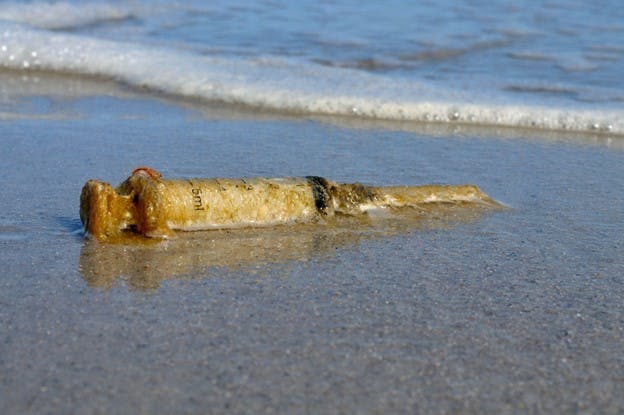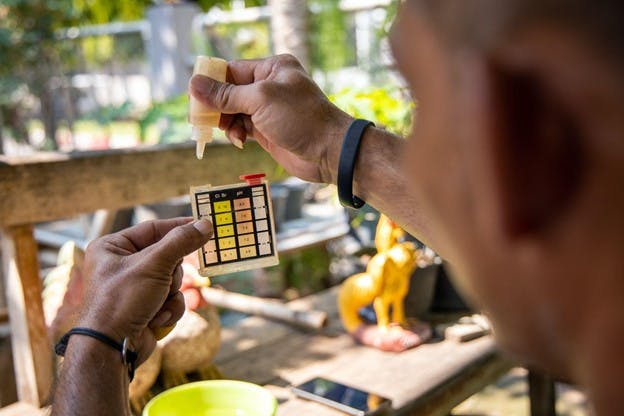🌟 New Arrival! Upgrade Your Water with Our Advanced Pitcher Filter. Shop Now
March 2023
A Tough Pill to Swallow: Pharmaceuticals in Water
Just say no.
This was the mantra for the war on drugs in the 1980s and 1990s. Today, ideas and laws around recreational drugs are changing fast, but it's not just recreational drugs that are changing. The use of pharmaceuticals and other legal drugs is increasing and in some cases, it's these legal drugs that are causing the issues with drug abuse.
Still, when taking any kind of drug or medication, most of us do so by choice. It might be prescribed by a doctor or we can talk to a pharmacist if we have questions or concerns. When the water that comes out of your tap contains traces of drugs you don’t know are there, you no longer have the ability to make a choice.
That’s why it’s so concerning that pharmaceuticals in water bodies are now being found all over the world.
In this article, we’ll look at these drugs to find out what they are, where they’re coming from, and what you can do to make sure any medications you consume are from a trusted pharmacy and not flowing out of your faucet.
Where Do These Pharmaceuticals in Water Come From?
Almost all water has some impurities and that includes your tap water. Depending on where you live, the water that comes out of your faucet most likely started its journey as groundwater or as water from a lake or river. All of this water picks up both naturally occurring and man-made pollutants, and only a portion of that is filtered out by water treatment plants.
Some of the man-made contaminants in water today are drugs, pharmaceuticals, and their metabolites. These comes from various places including:
Pharmaceutical Manufacturing Plants
Many facilities dump wastewater from the manufacturing process into local rivers, reservoirs, and other surface water bodies. This can create pharmaceutical pollution many miles downstream and that means it can contaminate your water supply. It’s been found that towns around these plants have between 10 to 1,000 times higher concentrations of pharmaceuticals in water bodies.
Sewage
When people take different drugs — spanning from pharmaceuticals, to street drugs, to caffeine and nicotine — a lot of this isn’t fully metabolized in the body and ends up in our sewage once excreted. While sewage is mostly treated before it reenters our water systems, many of our municipal wastewater treatment systems are overloaded, making spills common. Also, treatment plants usually only treat water for certain contaminants, and drugs aren’t always on the list.
There’s also the problem of topical lotions and other personal care products that wash off our skin and head straight down the drain.
Flushing
Just because the 200-capsule bottle of over-the-counter ibuprofen is almost the same price as the bottle of 50, it doesn’t mean it's a better deal. Especially if half the bottle’s contents end up heading to your local wastewater treatment plant a year from now.
In this way, literal tons of the drugs sold in the U.S. go down the drain. The EPA estimates 1,644 to 2,300 tons of pharmaceutical waste are flushed down the toilet annually. Just like above, this ends up in your sewage, where modern water treatment processes often aren’t good enough to remove the pharmaceutical compounds.
Agriculture
If you’ve ever had a pet, you know that cleaning up after them is a must. Now imagine having hundreds or even thousands of large barnyard animals and you can understand that things will get unsanitary quickly. Unfortunately, this can mean illness for the animals, and one way to combat this is to have plenty of antibiotics and other drugs on hand. Just like in humans, these drugs are excreted in the animals’ waste, which can be washed into local water systems as rainstorm runoff.
What Pharmaceuticals Are Found in Water?
As the presence of pharmaceuticals in our lives grows, there are more potential contaminants that could end up in our water. These include not only over-the-counter pain medications like ibuprofen, acetaminophen, and naproxen, but also endocrine-disrupting chemicals, antibiotics and antimicrobials, blood pressure medications like beta blockers, antidepressants and mood stabilizers, and anti-seizure medications like carbamazepine.
Most of the preliminary research by the World Health Organization and others suggests the levels of pharmaceuticals in water aren’t high enough to have negative human health effects. However, plenty more research is needed to understand the potential risks of long-term exposure and the health risks of the mixture of so many medications.
Large-scale studies will need to be conducted to fully understand the environmental risks.
What Are the Potential Environmental Impacts of Pharmaceuticals in Water Bodies?
While more water research is needed to understand the risks that low concentrations of active pharmaceutical ingredients pose to our environment, there are some concerning signs.
In some aquatic environments that have been exposed to large amounts of estrogenic hormones, fish are becoming intersex. In the Potomac River, male fish are displaying physical traits of female fish, including developing eggs.
Researchers have found high levels of estrogen in the water these fish live in, which they attribute to a combination of agricultural runoff and human and animal waste washing into the rivers. Some scientists see the feminization of these male fish as a possible warning sign for how pharmaceuticals in water might affect humans and larger animals.
Are Pharmaceuticals Allowed to Be in Tap Water?
The U.S. Environmental Protection Agency (EPA) has yet to create enforceable limits on any pharmaceutical contaminants that can be in your public drinking water supply.
In 2016, they placed 10 pharmaceutical compounds on the Contaminant Candidate List. The CCL is a list of water contaminants they intend on researching further.
Can Pharmaceuticals Be Removed from Drinking Water?
Sewage treatment plants are usually not well equipped to remove pharmaceuticals because there’s no regulatory pressure on them. However, some of the methods they use to get rid of other contaminants, like pesticides, are effective at dealing with some medications. For instance, chlorine can break down acetaminophen and codeine.
With so many varieties of pharmaceuticals, strategies that remove just a few may not be good enough. One of the most effective methods of drinking water treatment is a water filter with reverse osmosis. Reverse osmosis filtration systems improve your water quality by getting rid of all but the smallest of particles in your water.
How Can You Protect the Environment Against Pharmaceutical Pollution?
If you’re like many people, you have a medicine cabinet full of prescriptions and over-the–counter medications. To keep them out of the environment, knowing how to dispose of them is key. Here are a few things to keep in mind when considering the disposal of medications.
First, never flush meds down the toilet or a drain. Many cities have set up take-back programs to collect unused medications and properly dispose of them. To find these programs in your area you should check out DisposeMyMeds.org.
If your town doesn’t have one of these programs, throwing them away is a better alternative than putting them down the drain. Be very careful with this though. You want to make sure no children or animals find and ingest them. Many people recommend crushing them up and placing them in a sealed bag mixed with a little bit of water and sawdust or cat litter.
If you’re disposing of a prescription, make sure you peel off the label with your personal information before discarding the bottle.
The exception to the no-flushing rule is when you’re dealing with highly addictive opioids. If you can’t properly dispose of these at a take-back program, it's often best to flush them. These are not safer for the environment, but this will ensure no one gets ahold of them.
Finally, try not to buy more than you need when picking up over-the-counter meds. It’s tempting to buy the extra-large bottle for just a little more, but if you aren’t going to use it before the expiration date, it’s better that you go smaller.
Does Bottled Water Contain Antibiotics?
Bottled water is regulated by the Food and Drug Administration (FDA), whereas tap water is regulated by the EPA. The goal of the FDA is to keep up with the quality standards of the EPA. If the EPA makes a new rule about tap water, the FDA will look into adopting the rule for bottled water, but the FDA won’t adopt any regulations first.
Since the EPA doesn’t regulate antibiotics and other pharmaceuticals in tap water, the FDA also doesn’t regulate them in bottled water.
Pharmaceutical residues have been found in water samples all across the world so it’s unlikely that bottled water will have less than tap water. Many studies of Chinese bottled water have come back positive for antibiotics.
How to Protect Your Water Quality at Home
Figuring out whether or not pharmaceuticals in water have an adverse effect on public health is something that will probably take years to fully understand. Until then it's up to each one of us to do our part in protecting both the environment and our homes from these potential risks. By properly disposing of medications so they don’t enter our waterways and by installing water filters in your home, you can minimize exposure to pharmaceuticals in water.
HomeWater’s Undercounter 4-Stage Water Filtration System with reverse osmosis is designed to provide you with high-quality, great-tasting water that your family will love. These easily installed American-made point-of-use filters remove lead, organic compounds, chlorine, metals, and microorganisms from the water in your taps.
For full protection at all your faucets and appliances, try our 4-Stage Whole House Water Filter with an added salt-free water softener and UV light filter. This high-capacity system is rated for 1 million gallons and it will remove sentiment, dirt, rust, chlorine, VOCs, and so much more.



